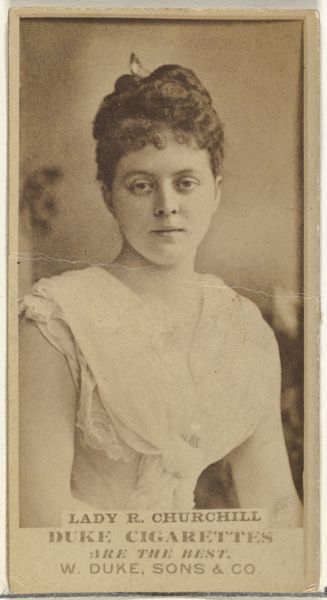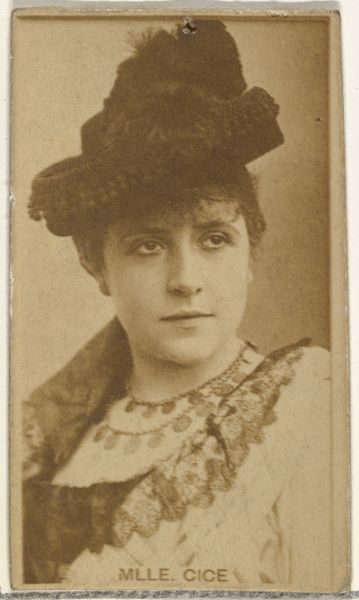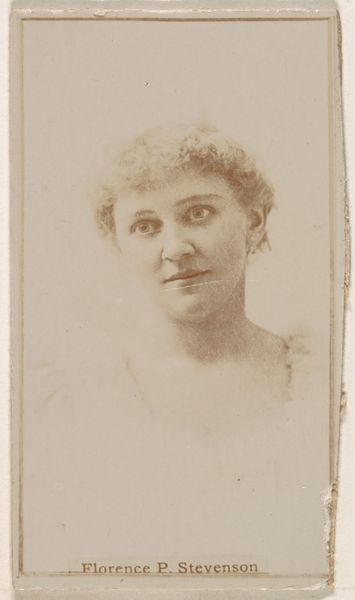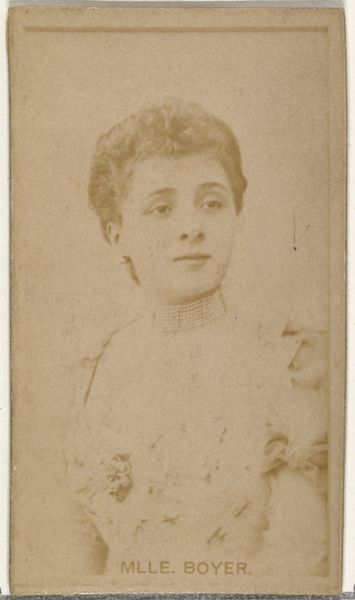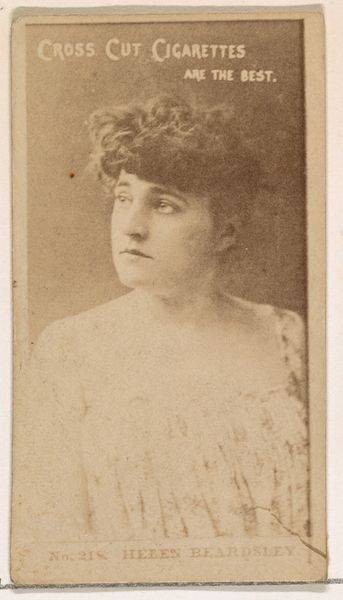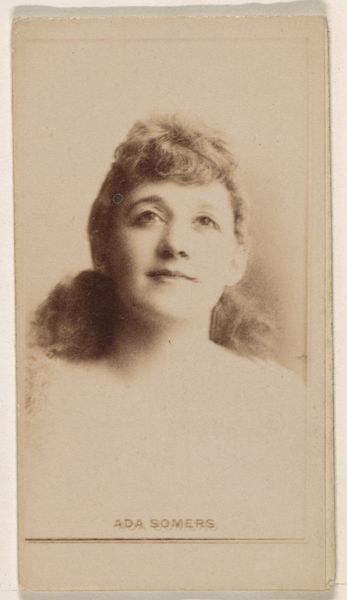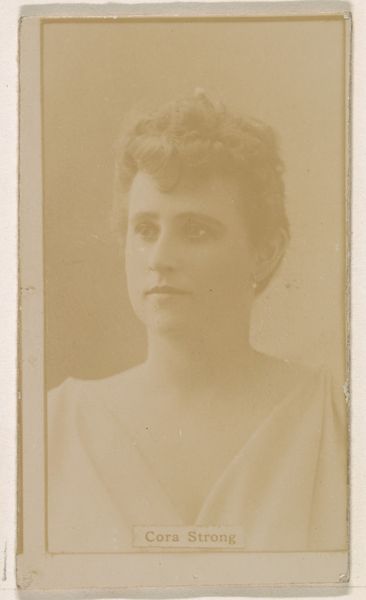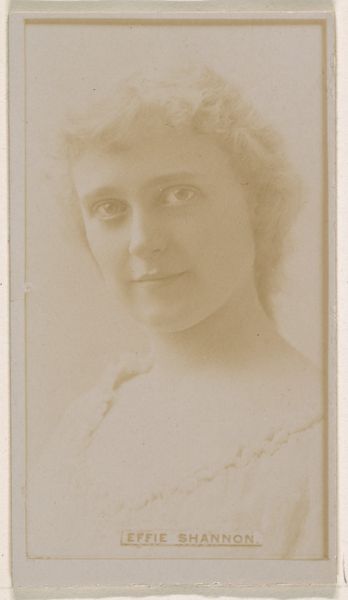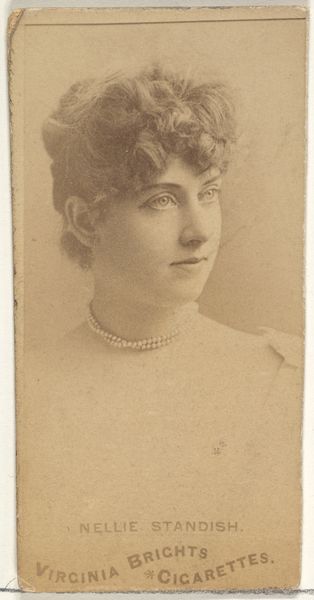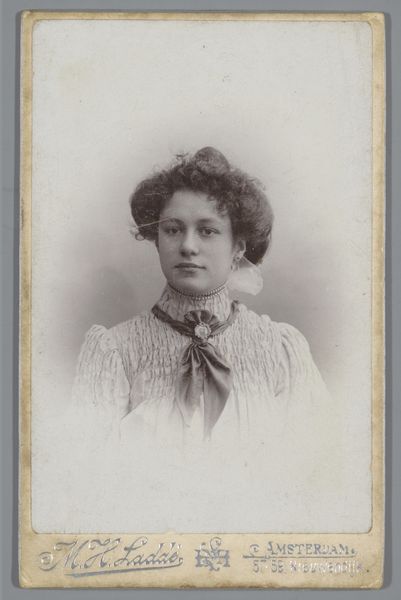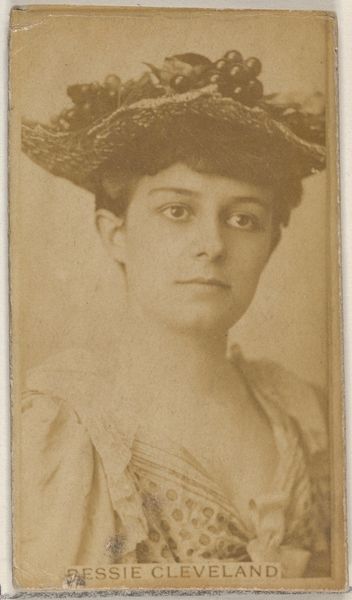
Lady R. Churchill, from the Actors and Actresses series (N145-8) issued by Duke Sons & Co. to promote Duke Cigarettes 1890 - 1895
0:00
0:00
print, photography, albumen-print
#
portrait
# print
#
photography
#
albumen-print
Dimensions: Sheet: 2 11/16 × 1 3/8 in. (6.8 × 3.5 cm)
Copyright: Public Domain
Editor: Here we have an albumen print from between 1890 and 1895, titled "Lady R. Churchill," part of the Actors and Actresses series by W. Duke, Sons & Co., originally used to promote Duke Cigarettes. It's fascinating how a portrait could be used for advertising. What can you tell me about this intersection of celebrity, commerce, and gender politics of the time? Curator: This portrait encapsulates a pivotal moment in the construction of celebrity and gender. Cigarette companies used images of actresses and prominent women to appeal to a broader consumer base, associating smoking with sophistication and aspiration. Lady Randolph Churchill, being an American socialite married into the British aristocracy, represents this aspiration, but how does her image, subtly placed on a cigarette card, reinforce or challenge the expected roles of women in the late 19th century? Editor: It feels somewhat subversive. On one hand, her image is being used to sell a product, objectifying her. But on the other, she's achieving a certain level of fame and visibility outside of traditional aristocratic roles. Curator: Precisely! This tension is crucial. Consider also the socio-economic context: as women were increasingly entering the workforce, smoking became a symbol of rebellion and independence, even empowerment. This card participates in the social and historical trends of a rapidly evolving time. So the question isn't just about individual agency, but about how the forces of capitalism, gender norms, and visual culture intertwine to create meaning. Where do you see the possibilities for agency to manifest? Editor: I think this highlights how complex the narratives of women in history are, not merely victims but active participants. It's a small object, yet so revealing about the period. Curator: Exactly. These images remind us to critically analyze the ways images are mobilized to shape cultural norms and perpetuate, or subvert, power structures.
Comments
No comments
Be the first to comment and join the conversation on the ultimate creative platform.
